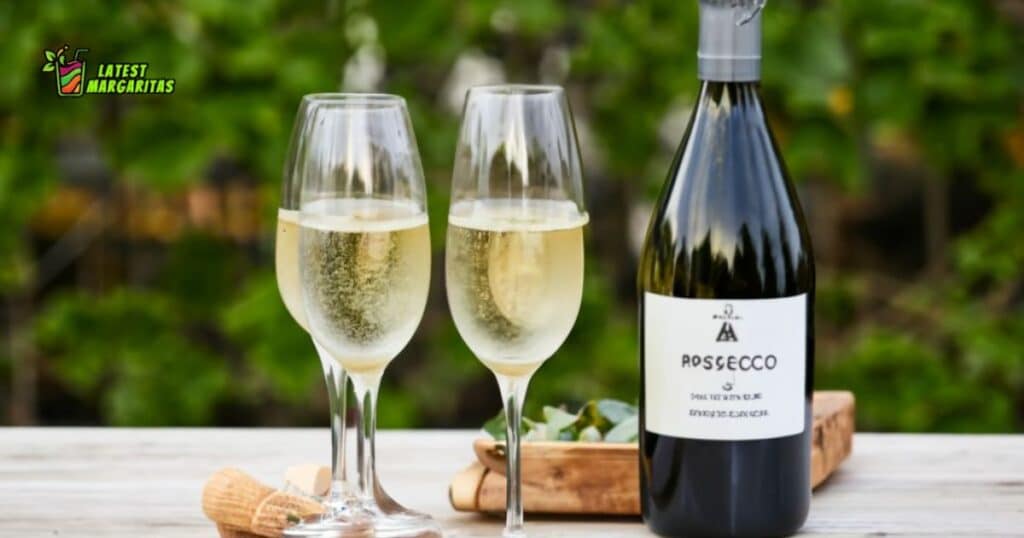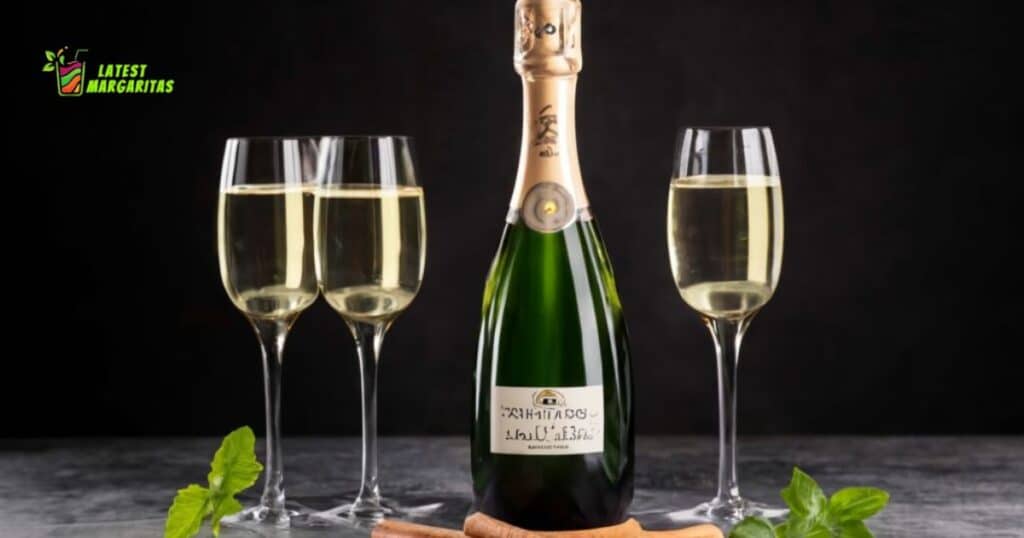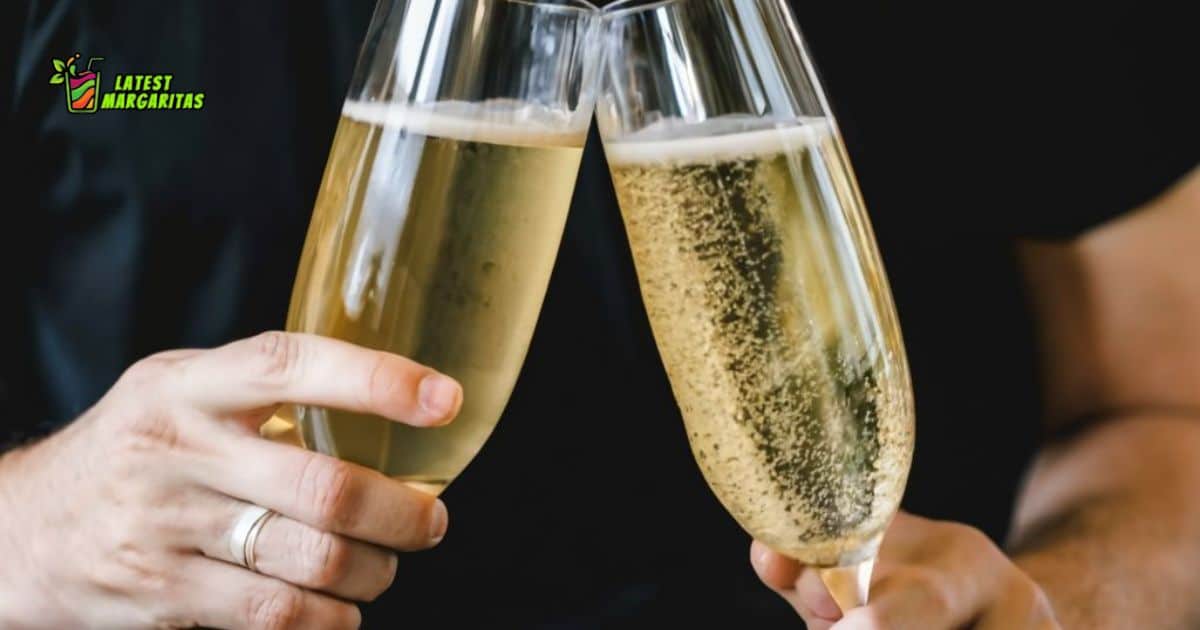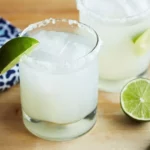Prosecco and Champagne are two popular types of sparkling wine. Prosecco comes from Italy and is made from Glera grapes. It is lighter, fruitier, and less expensive than Champagne. Champagne is from the region of the same name in France. It uses Chardonnay, Pinot Noir, and Pinot Meunier grapes and has a more complex flavor.
Have you ever wondered what makes Prosecco and Champagne different? While they are both sparkling wines, Prosecco and Champagne are very unique. They come from different places and use different grapes. Their flavors and how they are made also set them apart.
Prosecco and Champagne may look the same as they bubble in your glass, but they are not quite identical. In this article, we will explore the differences between Prosecco and Champagne. We will look at where they come from, how they are made, what they taste like, and more. By the end, you will better understand what sets these two popular sparkling wines apart.
What Is Champagne?

For a wine to be called Champagne, it must come from the Champagne region of France. Only grapes grown within the Champagne appellation can be used. The permitted grape varieties are Chardonnay, Pinot Noir, and Pinot Meunier. Strict rules control how the vines are pruned and maintained, as well as limiting yields.
In addition, Champagne has to be made using the traditional méthode Champenoise. This involves a second fermentation process in the bottle to create the signature bubbles. The wines also need aging for a minimum of 15 months before release. This lengthy production process is what gives Champagne its refined taste and delicate effervescence. Following these criteria ensures any wine called Champagne is held to the highest standards of quality associated with the region.
Where Does Champagne Come From?
Champagne comes exclusively from the Champagne region of France. Some key details:
- The Champagne region is located in northeast France, about 100 miles east of Paris. It straddles the Marne River valley.
- The cool climate and chalky soil of the region are ideally suited to growing Pinot Noir, Chardonnay and Pinot Meunier grapes, the three varieties used to make Champagne.
- Terroir, which encompasses geography, geology and climate, gives the grapes distinctive mineral, acidic qualities that carry through to finished Champagne.
- Only wines made from grapes grown in the Champagne appellation, which covers over 34,000 hectares, can be called “Champagne”.
- Some of the most famous vineyards in Champagne are situated in the Montagne de Reims subregion, known for Pinot Noir, and the Vallée de la Marne, famous for Chardonnay.
- The towns of Reims and Epernay sit in the heart of Champagne country and are home to many elite Champagne houses.
Champagne originates exclusively from the specific growing conditions and terroir of the Champagne appellation in northeast France. This unique origin is indispensable to its high quality and prestige.
What Is Prosecco?

Prosecco is a sparkling white wine that comes from Italy. It’s made from grapes called Glera that are grown in hills near the town of Prosecco. The winemakers make it fizzy by putting the grape juice into big tanks instead of bottles, where it ferments and gets bubbles. This makes Prosecco cheaper to produce than Champagne. It isn’t as expensive or fancy as Champagne but it’s still bubbly and fun to drink.
Prosecco tends to be light in color and taste, with flavors of peach, pear and apple. Because of its lightness and bubbles, prosecco is a refreshing wine that’s perfect for celebrations, picnics or just enjoying on its own.
Where Did Prosecco Originate?
Prosecco originated in the hillsides near the town of Prosecco in northeast Italy. Here are some more details about the origins of Prosecco:
- The Prosecco region spans parts of the Veneto and Friuli Venezia Giulia regions in northeast Italy, south of Trieste.
- Prosecco has been produced here for centuries, with the first documented wines produced as early as the 16th century.
- The Glera grape, the main grape variety used to make Prosecco, has been grown here for a long time and is well-suited to the region’s soil conditions.
- The hilly landscapes of the Prosecco region provide excellent drainage and exposure for the Glera vines. The soil is made up of limestone, sandstone, and marl.
- The town of Prosecco, located near the cities of Conegliano and Valdobbiadene, lends its name to the entire DOC region and is at the heart of Prosecco production.
- Centuries of viticulture experience and fine-tuning of grape-growing and winemaking practices have defined Prosecco’s signature light, crisp sparkling wine style.
Prosecco traces its origins to the unique hillside vineyards surrounding the namesake town where it was first cultivated in the Veneto region of Italy. This origin lends it distinctive qualities.
What Is The Difference Between Champagne And Prosecco?
| Characteristic | Champagne | Prosecco |
|---|---|---|
| Origin | Champagne region, France | Hills of Veneto and Friuli-Venezia Giulia, Italy |
| Grape Varieties | Chardonnay, Pinot Noir, Pinot Meunier | Glera (85% minimum), small amounts others allowed |
| Production Method | Méthode Champenoise (secondary fermentation in bottle) | Charmat/Martinotti Method (secondary fermentation in pressurized tanks) |
| Style | Fine, small, long-lasting bubbles | Larger, shorter-lived bubbles |
| Pressure | 5-6 atmospheres | 2.5-3 atmospheres for Spumante, 1-2.5 for Frizzante |
| Taste Profile | Crisp, full-flavored | Light, fresh, fruit-forward |
| Cost | More expensive due to labor-intensive methods | Less expensive to produce |
Charmat- Martinotti Method
The method used to make most Prosecco sparkling wine is known as the Charmat-Martinotti method. It was developed in the late 1800s through the collaborative work of Federico Martinotti and Eugène Charmat. Martinotti conceptualized the method in 1895 and received a patent. However, it was Charmat who refined the application of the method around 15 years later. Specifically, Charmat designed the autoclaves, or sealed stainless steel pressure vessels, that allowed for the practical implementation of the process.
These autoclaves, which are still used today, are key to the Charmat-Martinotti method. Through this team effort, Martinotti and Charmat developed an efficient alternative to the traditional méthode champenoise used to produce Champagne. Their innovation involved conducting the secondary fermentation in large autoclaved tanks rather than individual bottles. This tank method went on to define Prosecco production.
How Does The Charmat – Martinotti Method Work?
Here are the important steps in the Charmat-Martinotti method:
- Base wine production: Grapes are pressed, crushed and fermented into still white base wine in the same way as traditional method wines.
- Transfer to autoclaves: The still base wine is transferred into large pressurized steel tanks called autoclaves that can hold thousands of liters.
- Yeast addition: Brewer’s yeast is added to the base wine in the autoclaves to induce the secondary fermentation.
- Fermentation in tanks: Carbon dioxide is produced as the yeast consume sugar, but is trapped in the sealed autoclaves. This allows the bubbles to be incorporated into the wine.
- Lees contact: The wine remains in contact with the yeast lees for 1-2 weeks to develop body and flavors.
- Pressure regulation: Vents regulate the pressure building from fermentation, preventing explosions.
- Filtration: The wine is filtered upon completion to remove yeast before bottling.
- Bottling: The sparkling wine is bottled under pressure to maintain the bubble formation.
This tank system allows an efficient and cost-effective mass production of Prosecco’s fine mousse.
Méthode Champenoise

The méthode Champenoise differs markedly from the Charmat-Martinotti method in that the secondary fermentation occurs within the bottle rather than large tanks. In this process, still base wine is bottled together with a liqueur de tirage, which is a mixture of Champagne wine and sugar. As the sugars ferment in the sealed bottle, carbon dioxide is produced, transforming the still wine into sparkling wine.
A key step is the riddling process where the bottles are inverted and rotated regularly over an extended period. This encourages the heavy yeast sediments to gradually work their way down into the neck of each bottle. Once the sediments have settled, they can be efficiently removed prior to sealing the bottle. Notably, one defining characteristic of Champagne is that the wine must ultimately be sold in the same bottle in which it underwent the in-bottle secondary fermentation.
Frequently Asked Questions
What Food Pairs Well With Prosecco?
Prosecco pairs well with seafood, light pasta, and salads. It also complements fruit, cheese, and Asian dishes. Other good pairings include brunch foods and light desserts.
Should I Serve Both Prosecco and Champagne at My Restaurant?
Depending on your budget and concept, choose between Prosecco and Champagne, or offer both for a richer list. A dual selection appeals more to wine enthusiasts given the differences between the two sparkling wines.
Can You Make Cocktails with Champagne?
Yes, champagne cocktails are easily made by mixing the bubbly with juices, liqueurs or spirits. Popular combinations include mimosas, Bellinis and Kir Royale. Care should be taken not to over-dilute the champagne’s delicate taste.





